It's a brand new month, everyone! It's a time for new beginnings. New campaigns, new landing pages, new blog posts, new emails, and new social media posts are all on the horizon.
But wait ... aren't we forgetting something? With last month's activities all done, we need to pause for a second to examine what worked and what didn't. And you can't do that just by saying last month's activities were "great" ... "great" doesn't pay the bills.
If you can prove that your marketing activities actually made an impact in your business, you'll have many more opportunities at your disposal. More budget to play with. And more potential hires to bring on board. Sounds like every marketer's dream, right?
So how do you go about first, finding the right metrics to use, and second, proving your marketing's ROI to your boss? Why, with a monthly marketing report template, of course. Download our completely revamped PowerPoint and Excel templates by clicking here, and then keep reading to learn how you can use them in real life.
For example, if you've been running a campaign for three months, and you're seeing a sales growth of 5% per month, then your ROI calculation will take out that trend.
Additionally, if you're a HubSpot customer, you can access an ROI calculator programmed with the same formula in our CRM.
Which Metrics Should You Track?
First things first -- which metrics should you be paying attention to in the first place? Not all metrics were created equal, and if you're going to capture your boss' attention with this PowerPoint deck, you're going to need to tell your story efficiently through data. Click through our marketing metrics template and get tips on how you can put together your marketing report deck.
How to Create Your Own Marketing Metrics Report
So now you know what metrics you need ... but what about customizing the PowerPoint slides to fit your business? Follow these four steps so you'll have engaging, accurate, and concise slides to show to your boss.
1. Download our monthly marketing reporting templates for Excel and PowerPoint.
Seriously, you haven't downloaded it yet? ;)
2. Open up Excel, and fill in the metrics you want to track.
Equations and graphs will automatically populate based on the metrics you add.

3. Copy the graphs and paste them into PowerPoint.
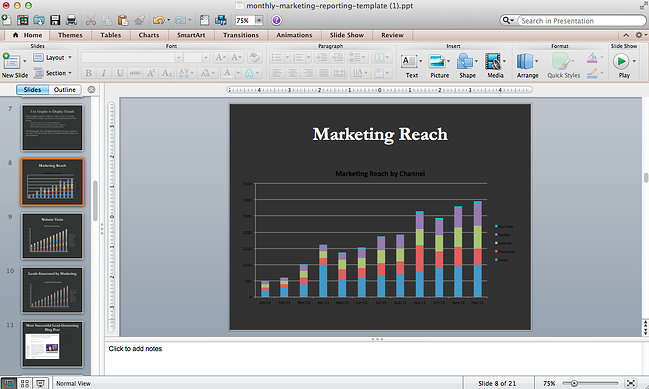
4. Customize your graphs and charts to fit your company's theme.
After crunching a bunch of numbers, you probably need a little creative break anyway. Click on individual elements in the graph to customize them. If you really want to get fancy with your presentation, check out these five simple PowerPoint tips.
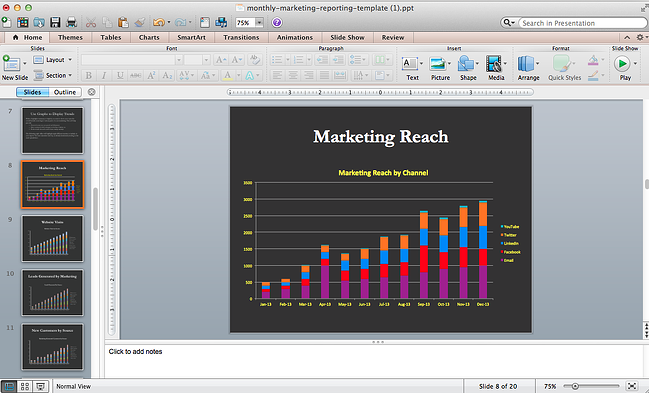
5. Add relevant examples to back up your graphs.
If you truly want to explain your marketing team's success from the past month, don't forget to include a slide here or there that touches on specific examples. For example, if you have a blog post that drove a crazy number of leads in a month, you could include that example slide with a few bullet-point takeaways after the "Leads Generated by Marketing" slide. These specific examples give color to your presentation and justify time spent on future projects.
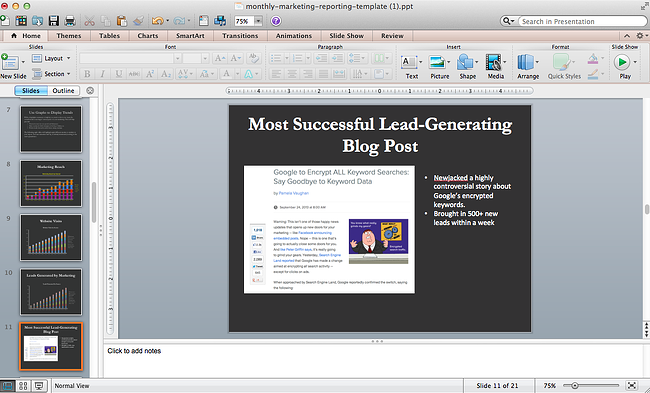
ROI Excel Templates
Excel is one of the best tools to use when you're tracking and calculating ROI on a regular basis.
Download our monthly marketing reporting templates for Excel and PowerPoint.
In the above collection of marketing reporting templates, you'll get to fill in the following contents (and more) to suit your company:
Below, let's review the five excel templates, and what you'll find in each one.
1. Reach

In this template, you can fill out the data to calculate your marketing reach. For example, you can calculate reach of your blog, email, or social media.
Then, the graphs below will help turn your data into a visual graph.
2. Visits
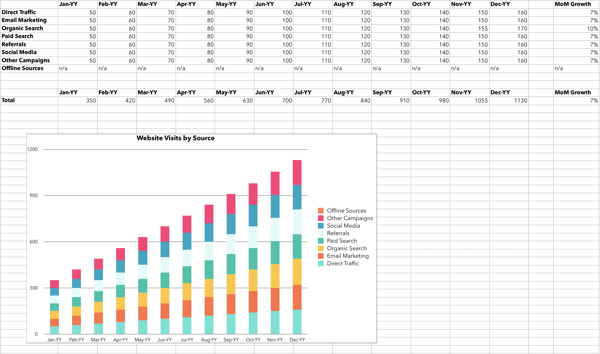
With this template, you can fill out the information to calculate your visits. This will include visits via several sources and channels including paid traffic, direct traffic, and social media referrals.
Then, the graph below will create a visualization of your data.
3. Leads
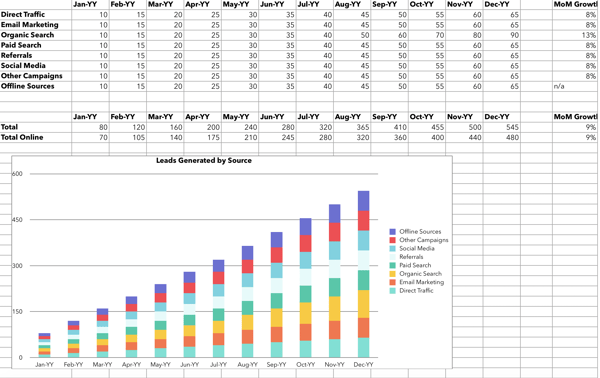
In this template, you can input your information, for how many leads are generated with your marketing campaigns.
In the graph below, you can visualize your leads depending on the sources.
4. Customers
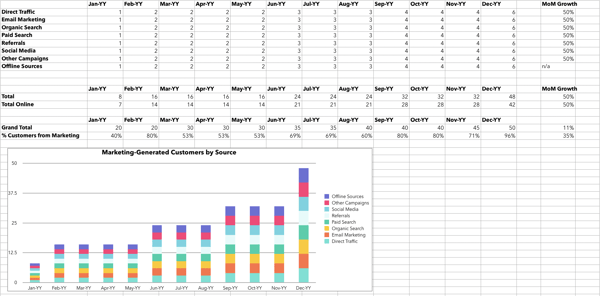
In this template, you can calculate your customers via traffic source. In the below graph, you can visualize your customers.
5. Conversion Rates
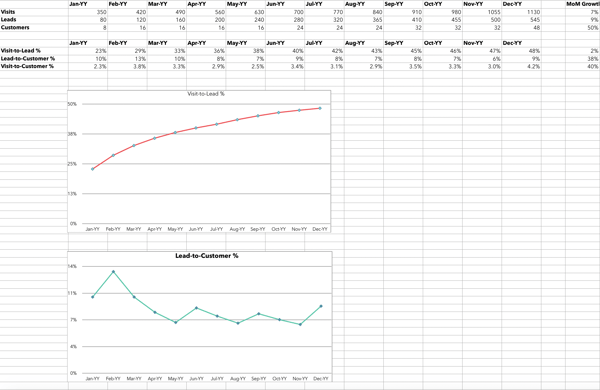
In this template, you can calculate conversion rates by inputting your information.
And that's it! Easy peasy way to track your team's success. After a few months of this, who knows, you may have an even bigger budget or a brand new marketer on board.
Editor's note: This post was originally published in September 2013 and has been updated for comprehensiveness.
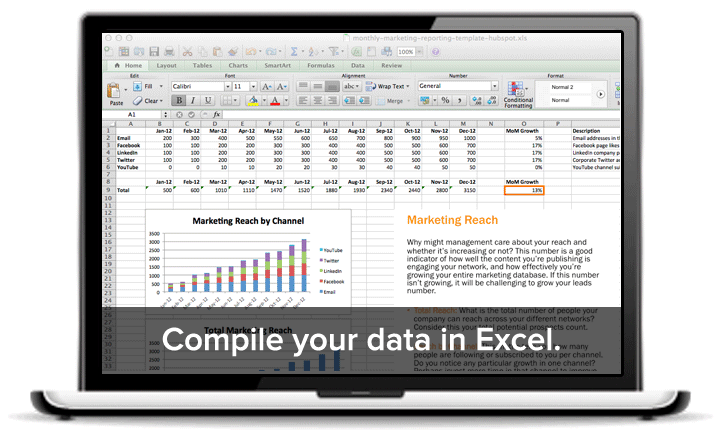
No comments:
Post a Comment